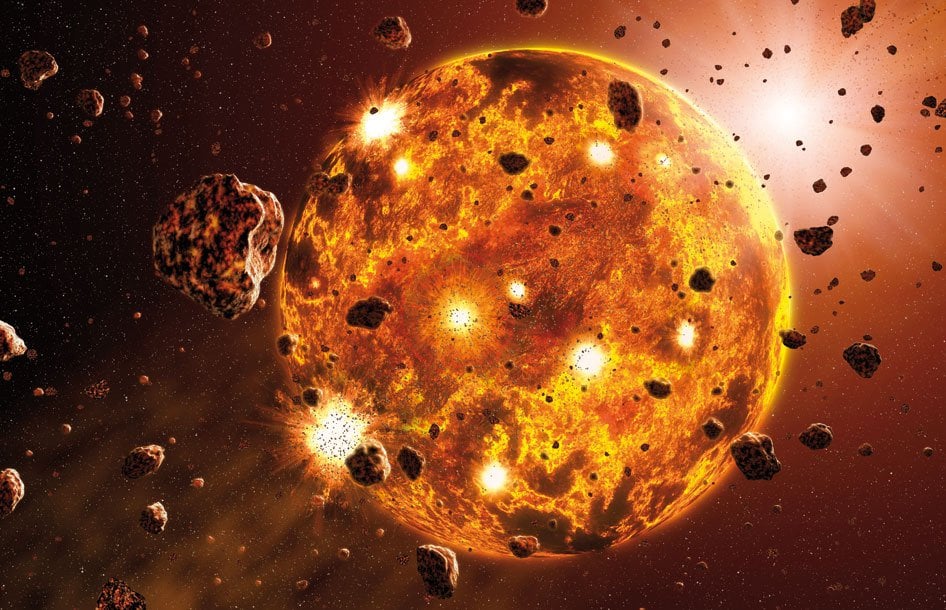Scientists suggested that the Earth was formed not due to the collision of large bodies, but in the process of small rocks falling on its embryo. This explains where the water came from in large quantities.

The Earth could grow very fast
Scientists published a study in which they questioned modern ideas about how our planet was formed. Traditionally, it is believed that the main mechanism of its growth from a planetesimal embryo was collisions with similar bodies. As a result of each of them, it became a little bigger.
These collisions occurred quite rarely. Therefore, in such a model, the formation of our planet stretched for 100 million years. However, the authors of the new study show that this could not be the case. In the protoplanetary disk, which had not yet had time to disperse, there were a large number of small rocks, the size of which was measured in millimeters.
There were a lot of them, so they could fall on the embryo of the planet all the time. Thus, the formation of the Earth went smoother and faster. The whole process in this case took only a few million years. At least, such a picture is given by the study of the isotopic composition of meteorites conducted by scientists. And we see the known planets in gas-dust disks mainly at this age.
Solving the mystery of water
The theory put forward has another important consequence. With its help, it is easy to explain where water appeared in large quantities on earth. In a theory based on rare collisions with planetesimals, this happened by chance. Most of these protoplanets were rocky, but we were lucky that some of them flew to us from the outskirts of the Solar System and were icy.
In the case of the formation of our planet from small rocks, this did not happen by chance. After all, along with silicate particles in the protoplanetary disk, there would have to be ice particles. They fell on our planet and turned into water.
“This theory would predict that whenever you form a planet like Earth, you will have water on it. If you go to another planetary system where there is a planet orbiting a star the size of the sun, then the planet should have water if it is in the right distance,” says Martin Bizzarro, one of the authors of the study.
According to phys.org
Follow us on Twitter to get the most interesting space news in time
https://twitter.com/ust_magazine
